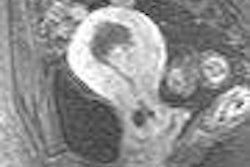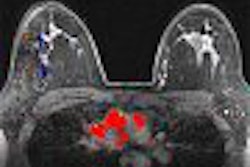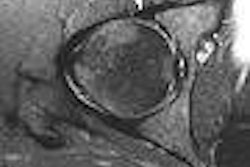Canada's universal healthcare program has a problem that imaging centers in the U.S. would love to have: too many patients for the available MRIs and qualified technologists. Creaking and groaning under the weight of months of backlogged appointments, an audible crack could almost be heard in December 2005 as the first -- and arguably illegal -- private MRI center opened in Winnipeg for self-pay patients.
While regions within the U.S. are overpopulated with diagnostic imaging centers, the entire nation of Canada has backlogs for CT and MRI patients that extend for months. What could these two wildly different supply and demand situations have in common? The need for improved patient throughput.
The case for enhanced throughput is patently obvious in Canada. Patients are growing sicker during the months they are forced to wait for diagnostic exams. And while much has been made of pharmaceutical tourists from the U.S. buying their medications in Canada, less has been made of the reciprocal trade of Canadian citizens coming to the U.S. for diagnostic procedures.
Canada has a macro-problem: its entire system is underequipped and understaffed to accommodate the current, much less a growing, demand for imaging services. The U.S., in contrast, has a micro-problem: thousands of independent imaging centers crowding the marketplace.
But in the hypercompetitive U.S. where the scales appear to have tipped heavily to the supply side, how is it that enhanced throughput, or increasing the available supply, will be of advantage to anyone?
MRI has long enjoyed the role of the sacred cash cow for many hospitals and imaging providers, living under the protection of an "if it ain't broke, don't fix it" mentality. Customer service, patient capacity, and the recently proposed reimbursement cuts in the U.S. will all demand more efficient management of patient throughput.
First, the concept of throughput must be understood to be synonymous with efficiency and not with the pejorative assembly line with which it is often confused. For example:
- How effectively are patients prescreened by referring physicians?
- How well is prescreening/scheduling performed by the imaging facility before the patient arrives?
- Is the information that has already been collected been transposed onto the in-office screening form, or does the patient need to go through the same screening for a third time?
- Do patient schedule windows really correlate to the time needed to scan the patient?
- Is there "padding" built in to accommodate technologists escorting patients around?
- Does the facility provide appropriate spaces for patient interview and change areas?
- Are there enough support spaces to accommodate in-bound and out-bound patients simultaneously?
- What if the patient has family members or loved ones accompanying them?
- Do sedation or anesthesia patients gum up patient flow?
- Are the schedules of supporting physicians carefully coordinated with patient schedules?
Ultimately, improving throughput means improving operational processes. But implementing these changes requires more than a new paragraph or two in the office manual. It usually requires re-education of staff, referring physicians, and even patients.
It may require changes in staffing and can also involve a reworking of a facility layout to support the most efficient operations. Changes in layout can be as limited as a rethinking of furniture arrangement, or as comprehensive as a suite renovation. For example, if the reimbursement for an MRI exam averages more than $600 per scan, adding only one additional scan per week can yield more than $30,000 in additional annual revenue. Improvements in efficiency can sometimes be measured in several additional scans per day, yielding hundreds of thousands of dollars in annual revenue!
By refining these varied processes, and developing imaging centers that support the best practices of caring for patients, it is possible to simultaneously improve patient care and throughput. The key element for Canada is improving the raw numbers of patients treated. The key for U.S. facilities is improving competitive positions through better customer care. And if you think that reducing redundant paperwork and streamlining the efficiency of getting patients in and out isn't a significant advantage to your patients, then it is clear that you haven't recently had a layman's experience of having an MRI exam.
Irrespective of whether you're wishing to address systemic patient backlogs or improve your position in a hypercompetitive landscape, one of the tools to help you to reach your goals is improved patient throughput. And these objectives may suggest significant changes to your facility layout or operation. Bear in mind that modest improvements to patient throughput can have profound impacts, both in terms of increased revenue and providing care to those patients who are waiting weeks, if not months, for their medical care.
By Tobias Gilk
AuntMinnie.com contributing writer
April 11, 2006
Reprinted from www.mri-planning.com by permission of the authors. If you would like more information on any aspect of MR facility design or safety, please contact Robert Junk or Tobias Gilk at Jünk Architects.
Related Reading
ECRI's report on MRI safety, March 28, 2006
Doubling down: Raising the stakes of MRI patient safety, March 9, 2006
Ten questions patients should ask their MRI provider: Is this real or is it hype? February 15, 2006
MRI-guided cancer treatment, February 1, 2006
MRI and cancer diagnosis, January 6, 2006
Copyright © 2006 Jünk Architects, PC



















